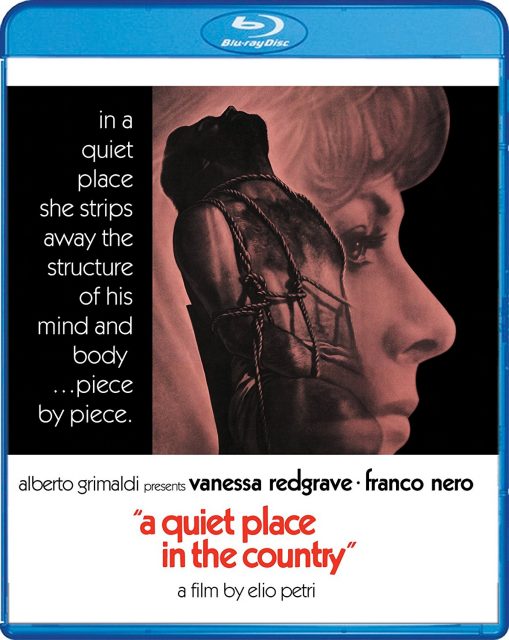Home Video Hovel: A Quiet Place in the Country, by David Bax
A Quiet Place in the Country‘s opening titles play out over images of works by Giacometti and other Italian artists. This isn’t director Elio Petri inviting comparisons to his own work, though. It’s meant to set the tone of the life lived by the movie’s protagonists, painter Leo (Franco Nero) and his lover Flavia (Vanessa Redgrave). Petri’s attempt to upend expectations by setting a familiar ghost story in the world of high art is only somewhat successful but, thankfully, the rest of the film is built on solid ground.
Struck with a bout of painter’s block, Leo is convinced that decamping from Milan for the countryside is what he needs in order to focus and so the couple rents a mansion on the outskirts of a village. Instead of working, though, he quickly becomes obsessed with the story of a young woman who was killed at the house during the Second World War. He questions the townsfolk for more information but they are cagey and contradictory. The more Leo learns about this Wanda (Gabriella Grimaldi), the more intense her spirit’s presence becomes in the house.
A Quiet Place in the Country is less concerned with Leo’s inability to paint or even with his crumbling sanity than it is with the widening gap between him and Flavia. They are introduced to us as deeply in love, a happy–if unconventional by movie standards–couple who spend their days in kinky S&M play, most of which involves Leo being tied to a chair. In the country, though, with Wanda occupying his mind, Leo’s daydreams turn into violent fantasies that make the viewer worry for Flavia’s safety.
For all its kink and connoisseurship, though, A Quiet Place in the Country is still a haunted house movie. Its allegorical structure, in which a ghost represents the decay of a romantic relationship, predates Robert Zemeckis’ What Lies Beneath by over three decades. And it has an abstract, unsettling score by Ennio Morricone who, though still best known for Westerns, is no stranger to the horror genre. All in all, A Quiet Place in the Country has a strong foundation that supports its idiosyncrasies.
Despite some hissing in the audio and some image stabilization issues, Shout! Factory’s transfer of A Quiet Place in the Country is a solid one. The preserved graininess makes it tactile and filmic.
Special features include a new interview with Nero and a new audio commentary by film historian Troy Howarth.



























